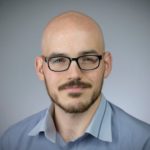Gartner's top 10 data and analytics (D&A) trends for 2023 can guide D&A leaders to create new sources of value by anticipating change and transforming extreme uncertainty into new business opportunities.
Gareth Herschel, VP analyst at Gartner, says the need to deliver provable value to the organisation at scale is driving these trends in D&A.
“Chief data and analytics officers (CDAOs) and D&A leaders must engage with their organisations’ stakeholders to understand the best approach to drive D&A adoption. This means more and better analysis and insights, taking human psychology and values into account.”
Gareth Herschel
Figure 1: Top 10 trends in data and analytics for 2023

Trend 1: Value optimisation
Most D&A leaders struggle to articulate the value they deliver for the organisation in business terms. Value optimisation from an organisation’s data, analytics, and artificial intelligence (AI) portfolio requires an integrated set of value-management competencies including value storytelling, value stream analysis, ranking and prioritizing investments, and measuring business outcomes to ensure expected value is realised.
“D&A leaders must optimise value by building value stories that establish clear links between D&A initiatives and the organisation’s mission-critical priorities,” said Herschel.
Trend 2: Managing AI risk
The growing use of AI has exposed companies to new risks such as ethical risks, poisoning of training data or fraud detection circumvention, which must be mitigated. Managing AI risks is not only about being compliant with regulations. Effective AI governance and responsible AI practices are also critical to building trust among stakeholders and catalysing AI adoption and use.
Trend 3: Observability
Observability is a characteristic that allows the D&A system’s behaviour to be understood and allows questions about their behaviour to be answered.
“Observability enables organisations to reduce the time it takes to identify the root cause of performance-impacting problems and make timely, cost-effective business decisions using reliable and accurate data,” said Herschel.
“D&A leaders need to evaluate data observability tools to understand the needs of the primary users and determine how the tools fit into the overall enterprise ecosystem.”
Gareth Herschel
Trend 4: Data sharing is essential
Data sharing includes sharing data both internally (between or among departments or across subsidiaries) and externally (between or among parties outside the ownership and control of your organisation). Organisations can create “data as a product,” where D&A assets are prepared as a deliverable or shared product.

“Data sharing collaborations, including those external to an organisation, increase data sharing value by adding reusable, previously created data assets,” said Kevin Gabbard, senior director and analyst at Gartner. “Adopt a data fabric design to enable a single architecture for data sharing across heterogeneous internal and external data sources.”
Trend 5: D&A sustainability
It is not enough for D&A leaders to provide analysis and insights for enterprise ESG (environmental, social, and governance) projects. D&A leaders must also try to optimise their own processes for sustainability improvement.
The potential benefits are enormous. D&A and AI practitioners are becoming more aware of their growing energy footprint. As a result, a variety of practices are emerging, such as the use of renewable energy by (cloud) data centres, the use of more energy-efficient hardware, and the usage of small data and other machine learning (ML) techniques.
Trend 6: Practical data fabric
Data fabric is a data management design pattern leveraging all types of metadata to observe, analyse and recommend data management solutions.
By assembling and enriching the semantics of the underlying data, and applying continuous analytics over metadata, data fabric generates alerts and recommendations that can be actioned by both humans and systems.
It enables business users to consume data with confidence and facilitates less-skilled citizen developers to become more versatile in the integration and modelling process.
Trend 7: Emergent AI
ChatGPT and generative AI are the vanguards of the coming emergent AI trend. Emergent AI will change how most companies operate in terms of scalability, versatility, and adaptability. The next wave of AI will enable organisations to apply AI in situations where it is not feasible today, making AI ever more pervasive and valuable.
Trend 8: Converged and composable ecosystems
Converged D&A ecosystems design and deploy the D&A platform to operate and function cohesively through seamless integrations, governance, and technical interoperability. An ecosystem's composability is delivered by architecting, assembling, and deploying configurable applications and services.
With the right architecture, D&A systems can be more modular, adaptable, and flexible to scale dynamically and be more streamlined to meet the growing and changing business needs and enable evolution as the business and operating environment inevitably change.
Trend 9: Consumers become creators
The percentage of time users spend in predefined dashboards will be replaced by conversational, dynamic, and embedded user experiences that address specific content consumers’ point-in-time needs.
Organisations can expand the adoption and impact of analytics by giving content consumers easy-to-use automated and embedded insights and conversational experiences they need to become content creators.
Trend 10: Humans remain the key decision-makers
Not every decision can or should be automated. D&A groups are explicitly addressing decision support and the human role in automated and augmented decision-making.
Herschel warned that efforts to drive decision automation without considering the human role in decisions will result in a data-driven organisation without conscience or consistent purpose.
“Organisations’ data literacy programs need to emphasise combining data and analytics with human decision-making,” he concluded.





